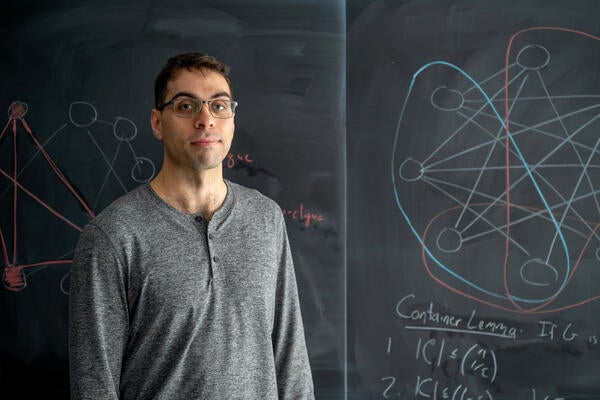
System recognizes hand gestures to expand computer input on a keyboard
New program recognizes users' hands beside or near the keyboard and prompts operations based on different hand positions

New program recognizes users' hands beside or near the keyboard and prompts operations based on different hand positions
By Media RelationsResearchers are developing a new technology that uses hand gestures to carry out commands on computers.
The prototype, called “Typealike,” works through a regular laptop webcam with a simple affixed mirror. The program recognizes the user’s hands beside or near the keyboard and prompts operations based on different hand positions.
A user could, for example, place their right hand with the thumb pointing up beside the keyboard, and the program would recognize this as a signal to increase the volume. Different gestures and different combinations of gestures can be programmed to carry out a wide range of operations.
The innovation in the field of human-computer interaction aims to make user experience faster and smoother, with less need for keyboard shortcuts or working with a mouse and trackpad.
“It started with a simple idea about new ways to use a webcam,” said Nalin Chhibber, a recent master’s graduate from the University of Waterloo’s Cheriton School of Computer Science. “The webcam is pointed at your face, but the most interaction happening on a computer is around your hands. So, we thought, what could we do if the webcam could pick up hand gestures?”
The initial insight led to the development of a small mechanical attachment that redirects the webcam downwards towards the hands. The team then created a software program capable of understanding distinct hand gestures in variable conditions and for different users. The team used machine learning techniques to train the Typealike program.
“It’s a neural network, so you need to show the algorithm examples of what you’re trying to detect,” said Fabrice Matulic, senior researcher at Preferred Networks Inc. and a former postdoctoral researcher at Waterloo. “Some people will make gestures a little bit differently, and hands vary in size, so you have to collect a lot of data from different people with different lighting conditions.”
The team recorded a database of hand gestures with dozens of research volunteers. They also had the volunteers do tests and surveys to help the team understand how to make the program as functional and versatile as possible.
“We’re always setting out to make things people can easily use,” said Daniel Vogel, an associate professor of computer science at Waterloo. “People look at something like Typealike, or other new tech in the field of human-computer interaction, and they say it just makes sense. That’s what we want. We want to make technology that’s intuitive and straightforward, but sometimes to do that takes a lot of complex research and sophisticated software.”
The researchers say there are further applications for the Typealike program in virtual reality where it could eliminate the need for hand-held controllers.
The study, Typealike: Near-keyboard hand postures for expanded laptop interaction, authored by Chhibber, Matulic, Vogel, and team-member Hemant Bhaskar Surale, was recently published in the journal for the proceedings of ACM Human Computer Interaction.

Read more
Here are the people and events behind some of this year’s most compelling Waterloo stories

Dr. Chris Bauch, a professor of Applied Mathematics at the University of Waterloo, is part of a team that has developed a new approach to help public health officials predict where outbreaks might occur. (Elisabetta Paiano/University of Waterloo)
Read more
New research demonstrates that vaccine skepticism on social media can predict public health crises

Read more
Waterloo researcher Cameron Seth is breaking down the world’s hardest computer science problem piece by piece
The University of Waterloo acknowledges that much of our work takes place on the traditional territory of the Neutral, Anishinaabeg, and Haudenosaunee peoples. Our main campus is situated on the Haldimand Tract, the land granted to the Six Nations that includes six miles on each side of the Grand River. Our active work toward reconciliation takes place across our campuses through research, learning, teaching, and community building, and is co-ordinated within the Office of Indigenous Relations.